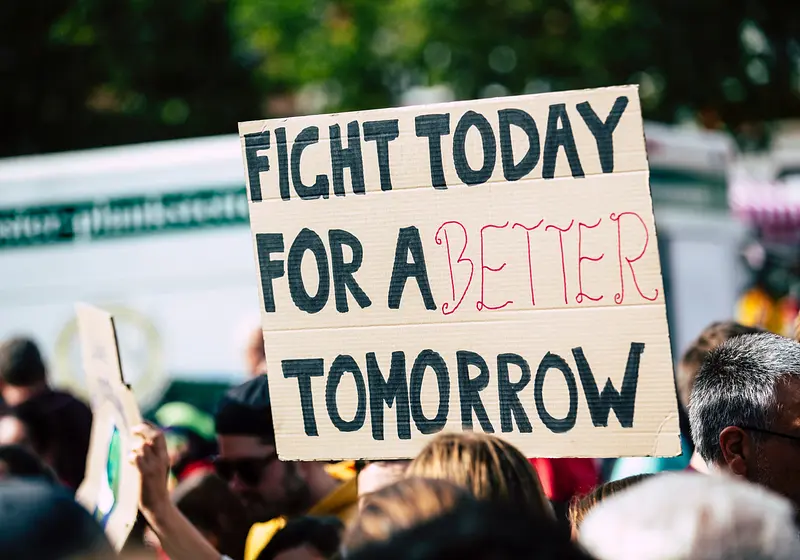Advocating is a significant element of community service, enabling change toward a healthy future. However, gaining experience in this field is challenging, especially for teenagers. Events related to promoting a cause typically involve public speaking and vulnerability, which require exposure and practice to overcome. Understanding how to inspire your audience, raise awareness, and leave a lasting impact is crucial to making your cause known.
Let us slide into your dms 🥰
Get notified of top trending articles like this one every week! (we won't spam you)Your Role As A Teen
With the help of organizations and online resources, teenagers have a prominent role in community service and raising awareness. They see the world through an accurate lens for other youth. Do not confuse advocacy with exclusive tasks for adults — it is for everyone who aspires to make an impact. Your contributions are significant!
If partnered with an organization, teens can often engage in various forms of service — writing blog posts, posting on social media, and more. Explore the options available to you. As Theodore Roosevelt stated, "Far and away, the best prize that life offers is the chance to work hard at work worth doing."

Take the Quiz: What Creative Hobby Should You Try?
Looking for a way to express your creativity but not sure where to start? Then this is the quiz for you!
Teens Make a Difference
Teenagers' interests and dedication to causes connect deeply with today's missions. Future generations will experience the lasting impacts of issues. Its members should be on the front lines, fighting for a better world.
Understanding your roles is essential to build a future of service and representation. Stay disciplined, motivated, and tied to your cause.
#1. Make a Personal Connection
Consider why you have advocated for a specific cause. How does it connect to elements in your personal life? If comfortable, share it while connecting these experiences to your mission.
It will strengthen your bond with the audience while giving you more credibility. Advocates who show honesty and vulnerability are more compelling than those who don't.
To strengthen your connections, consider starting a blog or a webpage. Having an additional resource is crucial for others to understand why they must take action. The Internet and other outlets allow your story to be accessible outside community events.
#2. Organize Your Topics
The cause you advocate for should be the center of your focus, whether for press conferences or commentaries. Avoid straying away from the solutions at hand. What is the exact message you want your audience to take away?
Make a concise and powerful impact. Don't burn out your audience with statistics without a proper connection.
Remember, use your time to connect with others and work together. You can make a difference with others around you! If you need help planning your topics, contact volunteers and local leaders.
#3. Be Respectful to Impacted Communities
When advocating, people from impacted communities work alongside you to support a particular cause. They share commentaries or first-hand experiences, which can be catastrophic and challenging to discuss. Be aware and respectful of others experiencing a crisis's impact.
Give them enough time to share their stories and experiences. Their voices matter. Represent them through your contributions!
#4. Use Social Media
Social media is a great method to spread your cause and communicate with the world. No matter how many followers you have, introducing fundraisers and posting makes a difference.
Ask your organization if you can design social media posts for them if possible. It's a great way to have more experience with the cause. If advocating independently, consider starting a blog/page where you can build ideas on.
#5. Encourage Others to Spread the Cause
A primary goal of advocating is to inspire others to take action. Give incentives toward the issue you are raising awareness of. Conclude your speech with solutions, a tactic that makes your audience motivated to take action.
Consider how you can reach others outside of advocacy events. Ask your friends if they want to join you, and give solutions to issues.
#6. Stay Actively Involved
Demonstrate how you are consistently working toward the solution to a crisis. Make your efforts and others' contributions known to your audience. Over time, through repeated experiences with advocating, you will gain confidence and familiarity with the efforts surrounding your cause.
After all, how can you inspire a movement toward change if you remain still? Continue pushing outside your comfort zone until it encompasses your full potential.
#7. Follow Up
Your goal is to send your listeners home with new ideas and inspiration. Give them access to social media pages and resources that the organization provides. Flyers and business cards go a long way.
Sending emails is another method of keeping your audience engaged after your event. Ask for people's emails or provide a sign-up roster for weekly notifications. Remember, depending on your affiliation with other advocates/organizations, this may vary.
Advocacy Events: Outline
- A description of the issue at hand: Assume that members of your audience do not know many details about the issue.
- Personal Connections or Guest Speakers: Add a broader context to your previous statements. Demonstrate vulnerability and credibility, as previously discussed.
- Introduce Your Organization: This step is interchangeable with connecting with your audience. Explain how you and your organization are making an impact.
- Inspire Others to Take Initiative: Leave them with a final takeaway message and motivation to join your cause.
- Follow-Up: Send follow-up emails and post about your events online if applicable. Give your audience contact information and flyers.
While the outline doesn't apply to every campaign, it includes many activities found in these events. Remember, inciting others to take action is the primary purpose of advocating.
As a teenager, you can offer a young perspective on an issue and claim your place in the advocacy world. Exploring the options available to you will lead to a bright, motivating future. Stick to your cause and keep an open mindset.
















